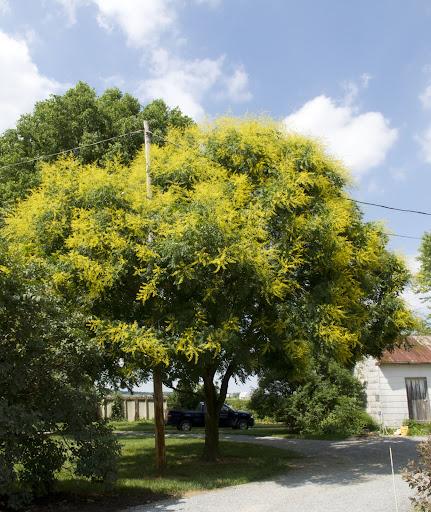Key points
- White prunicola scale (Pseudaulacaspis prunicola) is a non-native type of armored (hard) scale insect. It can be difficult to manage because a waxy body covering shields them from predators and certain pesticides. Learn more about scale insect groups and biology on Introduction to Scale Insects.
- This is a common pest of cherry laurel that causes plant decline and dieback when populations are high. Several other shrubs serve as hosts, but less frequently.
- Target monitoring and control efforts to the vulnerable crawler stage. Learn more about what to look for on Monitoring for Scale.
Appearance
- Mature female covers are circular, white with a yellow center, and up to 1/16” (1.5 mm) in diameter.
- Male covers are elongate, white, and up to 1/16” (1.5 mm) in length.
- Crawlers are salmon-colored.

Photo: John A. Davidson, Univ. Md, College Pk, Bugwood.org
Common host plants
Sixteen plant families are used by this scale, but it is regularly found on cherry laurel in our area.
- Cherry laurel (Prunus laurocerasus) and other Prunus species (such as flowering cherry) are preferred.
- Populations may occur on lilac (Syringa), holly (Ilex), boxwood (Buxus), and evergreen privet (Ligustrum; invasive).
Where to look
- They will be found year-round on the bark of twigs and branches.
- Juvenile males tend to congregate on the underside of branches in snowy-looking clusters.
- Infestations tend to begin on outer or smaller branches associated with leaf dieback.







